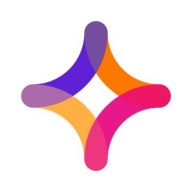

Jitterbit Harmony and Zapier compete in integration platforms. Jitterbit Harmony impresses with strong support, whereas Zapier offers an extensive feature set, justifying its cost.
Features: Jitterbit Harmony provides advanced data integration, robust mapping features, and support for diverse data protocols, ideal for complex integrations. Zapier offers simplicity, numerous pre-built connectors, and quick setups, appealing to users valuing agility and ease.
Room for Improvement: Jitterbit Harmony could enhance its user interface and reduce the complexity of initial setup. Expanding its pre-built connector library would also be beneficial. Zapier would benefit from richer features for advanced integrations and greater scalability options for larger projects. Additionally, enhancing customer support options would add value for Zapier users.
Ease of Deployment and Customer Service: Jitterbit Harmony involves a detailed deployment process supported by knowledgeable experts, which is beneficial for enterprises needing customized solutions. Zapier emphasizes a rapid, self-service deployment model suitable for businesses aiming for quick implementation without needing expert support.
Pricing and ROI: Jitterbit Harmony demands a higher initial investment but offers significant ROI for businesses with complex integration needs. Zapier provides a cost-effective option with tiered pricing, ideal for smaller businesses or projects requiring fast deployment and immediate benefits.


Jitterbit Harmony is a comprehensive platform for data integration and API management, enabling seamless synchronization and automation across cloud-based and on-premises applications.
Users leverage Jitterbit Harmony to integrate systems like ERP and CRM applications, simplifying complex data workflows and enhancing automation. It supports efficient data migration and ensures smooth connectivity, handling diverse integration needs and helping streamline business processes. Users emphasize its drag-and-drop functionality and extensive templates, which contribute to its robust performance. However, improvements are needed in data mapping, error message clarity, and documentation, especially when dealing with large data volumes.
What are the key features of Jitterbit Harmony?Companies across retail, manufacturing, healthcare, and finance sectors use Jitterbit Harmony to integrate critical applications and automate workflows. In retail, it connects inventory systems with sales platforms, reducing manual effort. Manufacturers sync their ERP systems with supply chain software, optimizing operations. Healthcare organizations integrate patient management systems with insurance databases, streamlining patient care. Financial institutions use it to connect accounting software with banking systems, ensuring real-time financial data exchange.
Zapier is a tool for primarily non-technical users to connect together web apps.
An integration between two apps is called a Zap. A Zap is made up of a Trigger and one or more Actions or Searches.
Whenever the trigger happens in one app, Zapier will automatically perform the actions or searches in another app in order.
Zaps are very lightweight and easy to set up. Zaps do not import or export old data (they only operate on new items created after the Zap is enabled). Zaps are also not kept in sync ("two way syncing") after the Zap is triggered.
Zaps are deceivingly simple if you're used to dealing with complex and difficult integrations. Their simplicity is what enables anyone to create them.
We monitor all Cloud Data Integration reviews to prevent fraudulent reviews and keep review quality high. We do not post reviews by company employees or direct competitors. We validate each review for authenticity via cross-reference with LinkedIn, and personal follow-up with the reviewer when necessary.